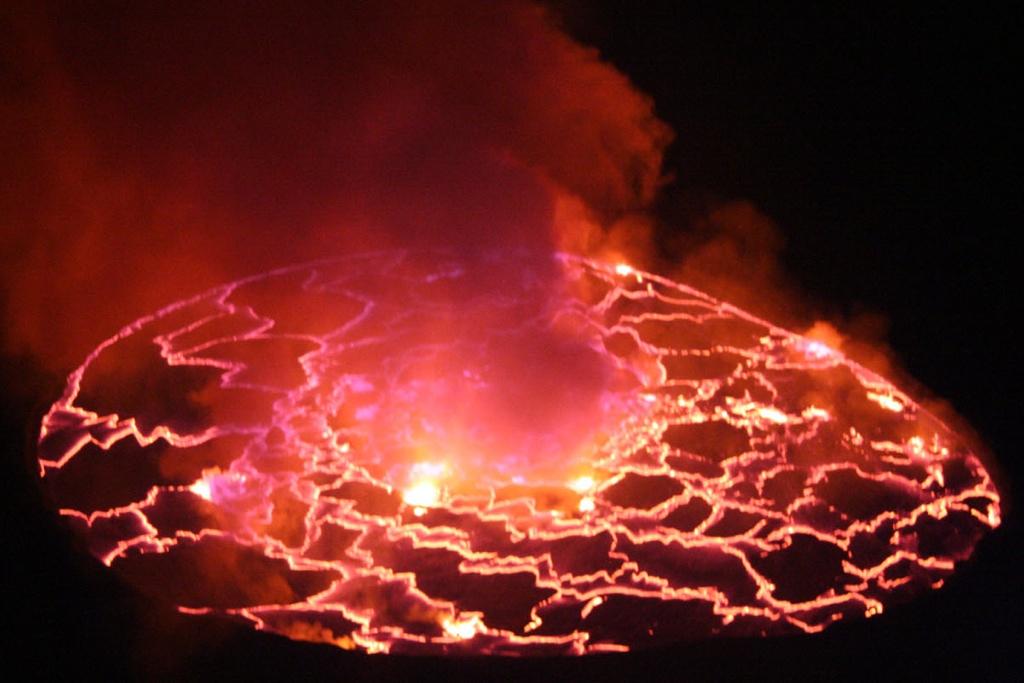Magma is sitting closer to Earth’s surface for longer than believed, study shows
Fluid magma glows against the nighttime sky, 2,600 feet below the summit of Mount Nyiragongo.
A new study has shown that magma bubbles in the Earth's upper crust for hundreds of thousands of years often without an explosive incident.
Researchers from the University of Washington used a new modeling technique that shows that magma is closer to the surface and lasts longer than once thought.
“You might expect to see a stewing magma chamber for a long period of time and it doesn’t necessarily mean an eruption is imminent,” said Sarah Gelman, a UW doctoral student in Earth and space sciences.
Earlier models said that molten rick, or magma, survive in the Earth's cooler upper crust for tens of thousands of years before it hardens.
This study lengthens that time span. It also showed that magma had to enter the crust at a higher rate than thought in order to cause and eruption.
The new model also found that magma actually accumulated slower than believed and remained in a more liquid state for much longer.
Researchers say that the new models for understanding how long magma has been there could also help predict eruption potential in the future.
"If you see melt in an area, it's important to know how long that melt has been around to determine whether there is eruptive potential or not," Gelman said.
"If you image it today, does that mean it could not have been there 300,000 years ago? Previous models have said it couldn't have been. Our model says it could. That doesn't mean it was there, but it could have been there."
The study was published in the journal Geology.
The article you just read is free because dedicated readers and listeners like you chose to support our nonprofit newsroom. Our team works tirelessly to ensure you hear the latest in international, human-centered reporting every weekday. But our work would not be possible without you. We need your help.
Make a gift today to help us reach our $25,000 goal and keep The World going strong. Every gift will get us one step closer.
